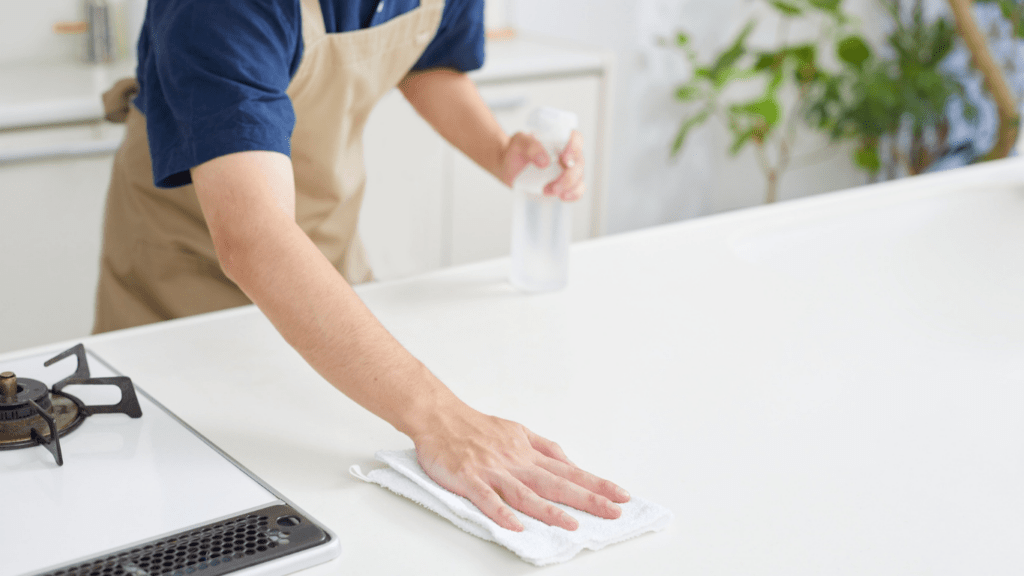As a parent, I know how quickly little ones can turn a calm kitchen into a bustling playground. With their natural curiosity, kids are drawn to the sights and sounds of cooking, but that excitement can lead to dangerous situations if we’re not careful.
Keeping our kitchens safe is essential for protecting our curious explorers while still allowing them to learn and grow.
Understanding Kitchen Hazards
Kitchens pose numerous hazards that can endanger curious little ones. Identifying these risks helps in creating a safer cooking environment.
Common Risks in the Kitchen
- Sharp Objects: Knives, scissors, and peelers can cause cuts. Store them out of reach or use knife blocks with safety features.
- Hot Surfaces: Stovetops and ovens reach high temperatures. Use knob covers and teach children about these dangers.
- Slippery Floors: Spills create slip hazards. Immediately clean up any spills to prevent falls.
- Electrical Equipment: Mixers, toasters, and blenders can cause injuries. Unplug these devices when not in use.
- Chemical Products: Cleaning supplies and detergents are toxic. Store them in locked cabinets, away from children’s access.
Importance of Safety Awareness
Understanding kitchen hazards promotes a safe cooking experience. Educating children about potential risks helps them learn to navigate the kitchen responsibly. Regularly reviewing safety rules reinforces safe practices and boosts confidence in young learners.
Setting clear boundaries cultivates a respectful and cautious approach to cooking tasks.
Essential Kitchen Safety Tips
Maintaining a safe kitchen environment for curious little ones is vital. Implementing specific precautions can significantly reduce risks associated with cooking and food preparation.
Secure Sharp Objects
Prevent access to knives and other sharp tools by storing them in locked cabinets or high drawers out of reach. Use knife blocks or magnetic strips placed on walls, ensuring they’re securely mounted.
Keep scissors and peelers in separate compartments, making them inaccessible to children. Regularly check these storage areas for organization and safety.
Store Hazardous Substances Safely
Store cleaning products, chemicals, and other hazardous substances in locked cabinets or high shelves. Utilize child-proof locks on cabinets to deter curious hands. Clearly label all items, so there’s no confusion.
Keep medicines secured in a dedicated cabinet, and avoid leaving any household items unattended on countertops to eliminate potential dangers. Regularly review and update the location of these substances as children grow and explore.
Child-Proofing Your Kitchen
Child-proofing your kitchen prevents curious little ones from accessing dangerous items and areas. Implementing a few strategic measures significantly enhances safety for children in this busy environment.
Use Child Safety Locks
Using child safety locks on cabinets and drawers effectively restricts access to potentially harmful items. These locks come in various forms, including adhesive strips, sliding latches, and keyed locks.
I recommend installing locks on all lower cabinets, particularly those containing sharp objects or cleaning supplies. Regularly checking these locks ensures they function properly, maintaining an ongoing layer of protection against accidents.
Arrange Child-Friendly Spaces
Arranging child-friendly spaces in the kitchen allows children to engage safely with their environment. Designate specific areas where kids can help, such as a low drawer with pots, pans, and safe utensils.
Placing items within their reach encourages involvement while keeping hazardous tools and ingredients stored away. Setting up a small table or station for age-appropriate cooking activities fosters creativity while promoting awareness of kitchen safety.
Regularly updating these arrangements as children grow can maintain their sense of involvement while ensuring continued safety.
Educating Children About Kitchen Safety
Educating children about kitchen safety is crucial for fostering awareness and responsibility. I focus on age-appropriate lessons and involving kids in cooking activities to promote safe practices.
Age-Appropriate Safety Lessons
I emphasize tailoring safety lessons to a child’s age and understanding. For toddlers, I highlight simple rules, like staying away from hot surfaces and sharp objects. For preschoolers, I introduce concepts like handling utensils and the importance of washing hands.
As children grow, I expand lessons to include safe knife handling and recognizing kitchen hazards. Regular discussions reinforce these teachings, making safety a habitual part of their kitchen experience.
Involving Kids in Cooking Activities
Involving kids in cooking activities cultivates an interest in food and reinforces safety practices. I assign simple tasks, like rinsing vegetables or stirring ingredients. I ensure they understand safety protocols before engaging in any activity.
Using kid-friendly tools aids their participation and helps reduce risks. It’s vital to supervise them closely and praise their efforts, boosting their confidence and encouraging responsible behavior in the kitchen.
Monitoring and Supervision
Monitoring and supervising children in the kitchen is crucial to ensuring safety and reducing the risk of accidents. Active supervision allows me to intervene swiftly when a child approaches potential hazards.
Importance of Keeping an Eye on Young Ones
Keeping a close watch on young ones while they explore the kitchen is vital. Children possess an innate curiosity that can lead them to investigate sharp knives, hot stoves, or electrical appliances.
Maintaining constant oversight helps prevent injuries and allows me to guide them toward safe practices, reinforcing safety lessons in real-time. Observing their actions enables me to address unsafe behavior immediately, teaching them appropriate kitchen habits that can last a lifetime.
Setting Boundaries for Kitchen Access
Setting clear boundaries for kitchen access serves as an effective strategy for safety. I establish designated areas with restricted access where potentially hazardous materials reside. Utilizing safety gates or child-proof locks on cabinet doors keeps dangerous items out of reach.
I clarify which spaces are safe for exploration and which require supervision. For example, I might create a specific cooking zone with age-appropriate utensils, ensuring they understand where it’s safe to play and learn. Reinforcing these boundaries consistently promotes a safe cooking environment while accommodating their natural curiosity.



